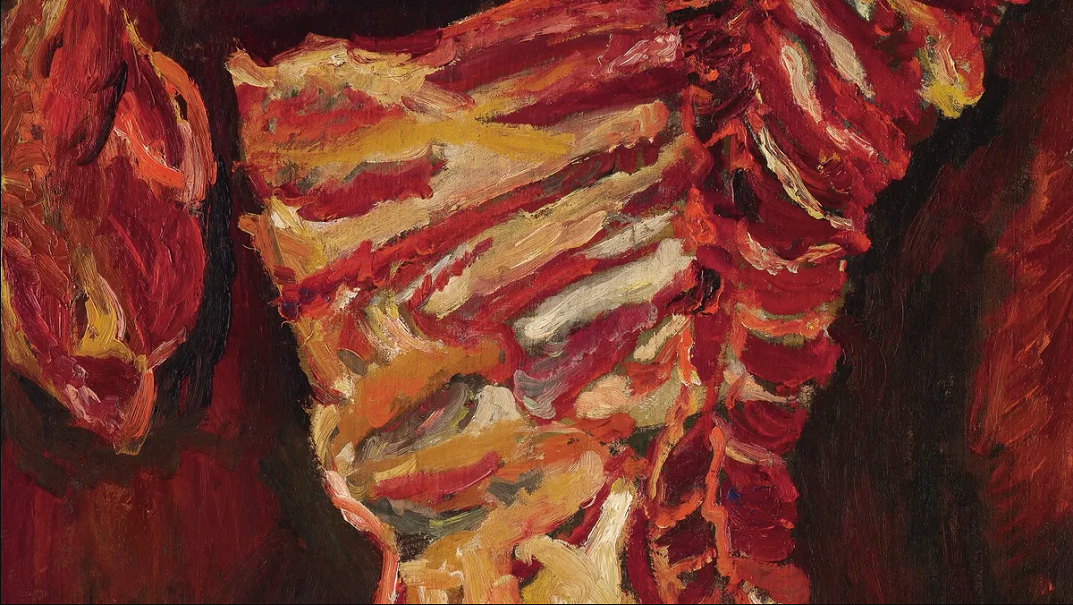Butchered Art
The painting of beef above, called ‘La Boeuf’ by Chaim Soutine, sold for $28,165,000 in 2015.
I recently read a book called Steal Like An Artist, in my quest to read a book for each year of my age (a goal inspired by friend and author Bill Zahren). The book is about finding creativity, which made me wonder if our craft at Old Station Craft Meats may be a form of art?
I believe that an obvious connection is through our sausage making. I believe that this falls under the genre of culinary arts, which already has “art” in the name. This seems like a no-brainer, but what about the other things we do here at the butcher shop. What about the fabrication of steaks, chops, or roasts.
I still think that the cutting of steaks and other meats is considered an art form. There are many aspects of meat cutting that must be considered. The first of which is meat selection. This has been made easy for many meat cutters through the USDA’s grading system, but this wasn’t always the case and isn’t the case at Old Station Craft Meats. All of the meat we source from local farmers goes through the state inspection system and not the USDA, which means it isn’t graded. This means that it is up to our butchers to determine the quality of the beef and determine how to best utilize and sell it based on the quality.
Another aspect to my argument relates to the aging process. At Old Station Craft Meats we use two different methods for aging our beef - wet aging and dry aging. We wet age all of our steaks for at least 21 days. We also offer steaks that have been dry aged for at least 55 days. Both aging processes increase tenderness and the dry aging process also enhances the flavor profile of the beef.
Finally, how the meat is cut helps determine tenderness and visual appeal. The sign of a rookie meat cutter is what we refer to in the industry as the “wedge cut.” This means that one side of the steak is thicker than the other side. This not only looks bad, but can lead to uneven cooking of the steak. It is also important to properly trim and shape the steak. A properly frenched pork chop or rack of lamb adds so much appeal to the plate. Additionally, customers don’t want to pay for a bunch of inedible fat that adds no value to a steak.
I also appreciate the tactile aspects of butchery. As Austin Kleon, author of Steal Like An Artist, notes, “We need to move to feel like we’re making something with our bodies and not just our heads. We need to find a way to bring our body into our work.” We certainly bring a lot of movement into our work, from lifting 250 pound beef quarters with our legs and backs, to the careful separation and removal of tendon or sinew with our knife tips and fingers.
The customers that share our feelings on this issue often like to leave tips for our butchers. This is why we accept tips in our shop, which may seem unusual to some. However, we believe that our butchers have an artistic talent and offer a great service. Sometimes they will cut a non-traditional piece of meat for a customer (i.e. 7-bone roast, rolled rump roast, or kan kan chop) on the spot. This is very much like tipping a street performer or musician for a delighted experience through sound, sight or amazement.

